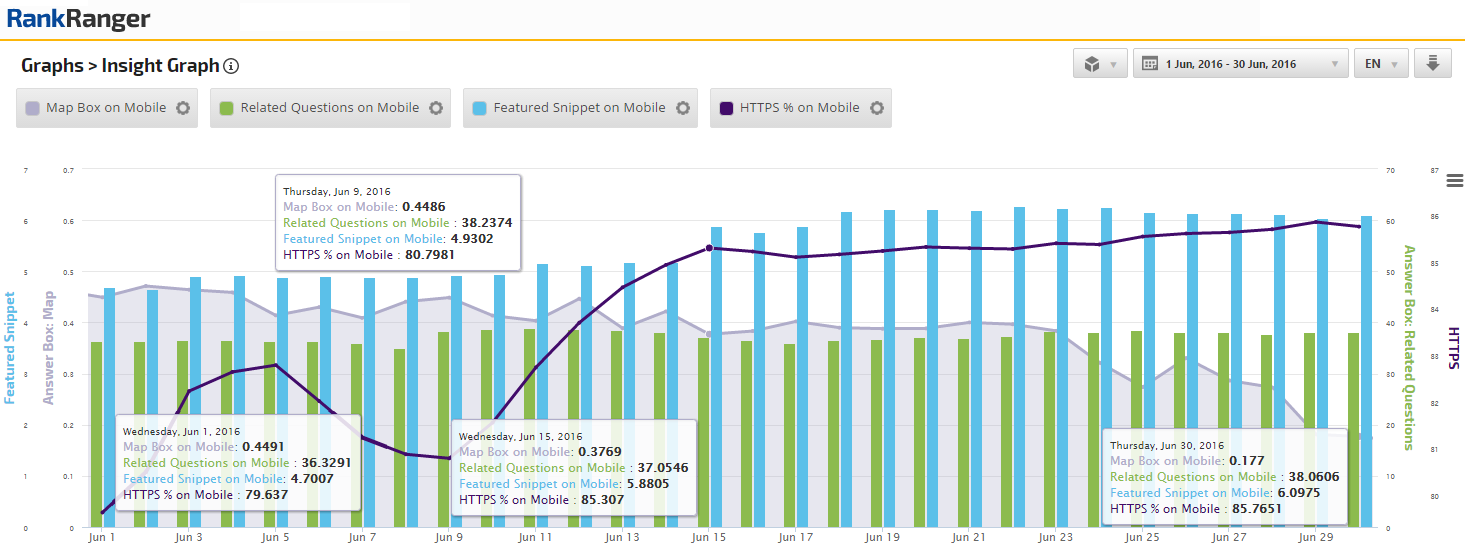
Posted by
Shay Harel
As June faded away what enduring SERP legacy did it leave behind? What SERP significance did the first two days of July bring with them? As always the SERP Features Tool is ready, willing, and able to help decipher the latest SERP data coming out of Google.
Last Week’s Google SERP Data: New Zealand
Ironically, last week proved to be a relatively quiet week on the SERP (not to say that the month was quiet overall, it certainly was not, you’ll just have to read on). Things were relatively stable across the usual SERP players, i.e., the US, UK, Australia, Canada, and so on. However, once I went down under, no not Australia but New Zealand, all of that seemed to change.
Some might assume that the New Zealand SERP behaves in accordance with its larger neighbor, Australia. However, I’ve seen the New Zealand SERP do some crazy things before and have learned not to make that assumption. New Zealand’s SERP is as independent as its sovereignty, it acts alone and it sure showed its autonomy last week with some bizarre SERP fluctuations.
New Zealand SERP Shifts: June 26 – July 2, 2016
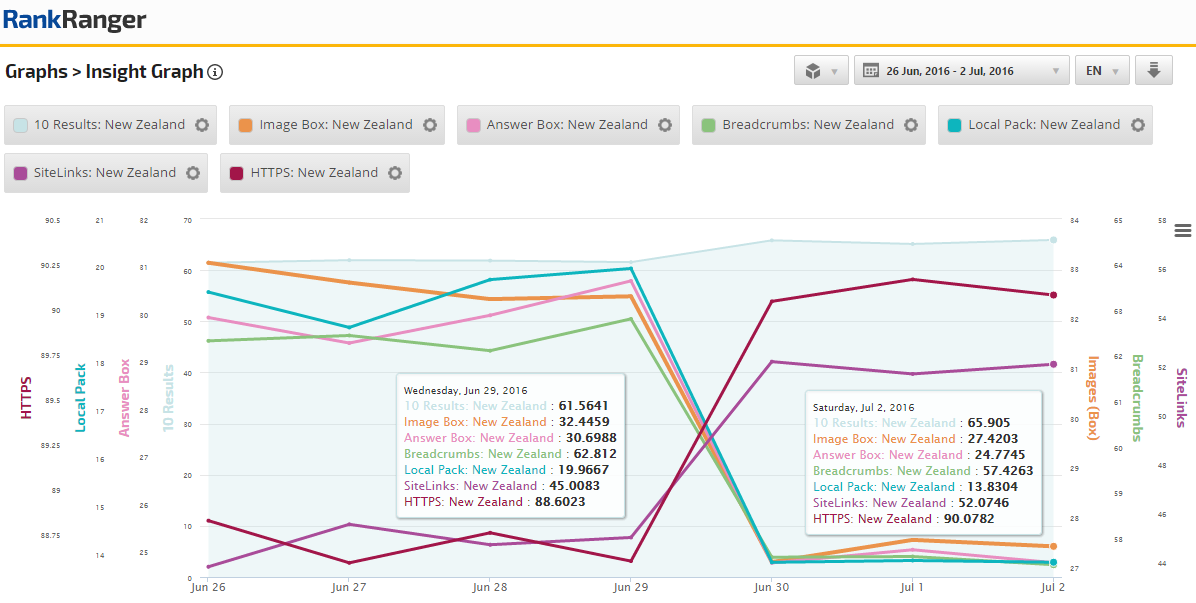
Fig 1. Various SERP features shift between June 29 and June 30 taking on new data trajectories
What’s surprising about the SERP data that came out the country last week is that the features that shifted were those that are generally more stable in New Zealand, and globally as well. For features such as HTTPS, Breadcrumbs, Local Pack, etc., shifting 2% would be an aberration. Here however, after the shift between the 29th and 30th, and by the time the week ended on July 2, the percentage of 10 organic results spiked over 4%, SiteLinks over 7%, and HTTPS around 1.5% (which for the feature is simply enormous, considering that over the previous 27 days the feature rose a total of 3.5%).
With big increases came large losses as well. Again, shifting between the 29th and 30th, Image (Box), Answer Box, and Breadcrumbs all showed over 5% losses by July 2, while Local Pack saw an over 6% loss as well. In other words, concurrently big numbers from a seemingly unexpected place, from unexpected features, all point to a SERP shift in New Zealand. I’ll keep my eyes on it to see if this data trajectory continues, or if the numbers return to previous levels… my bet is on the former.
A Month of SERP Trajectory Shifts
All of this talk about SERP trajectory shifts makes me think about…. well, about more SERP trajectory shifts. In fact, if there were a King of the SERPS they would dub thee June the month of SERP trajectory shifts.
Let’s start with the SERP in the US, where there were two sets of SERP shifts, an early month and mid-month data transition.
Early June SERP Feature Trajectory Shifts
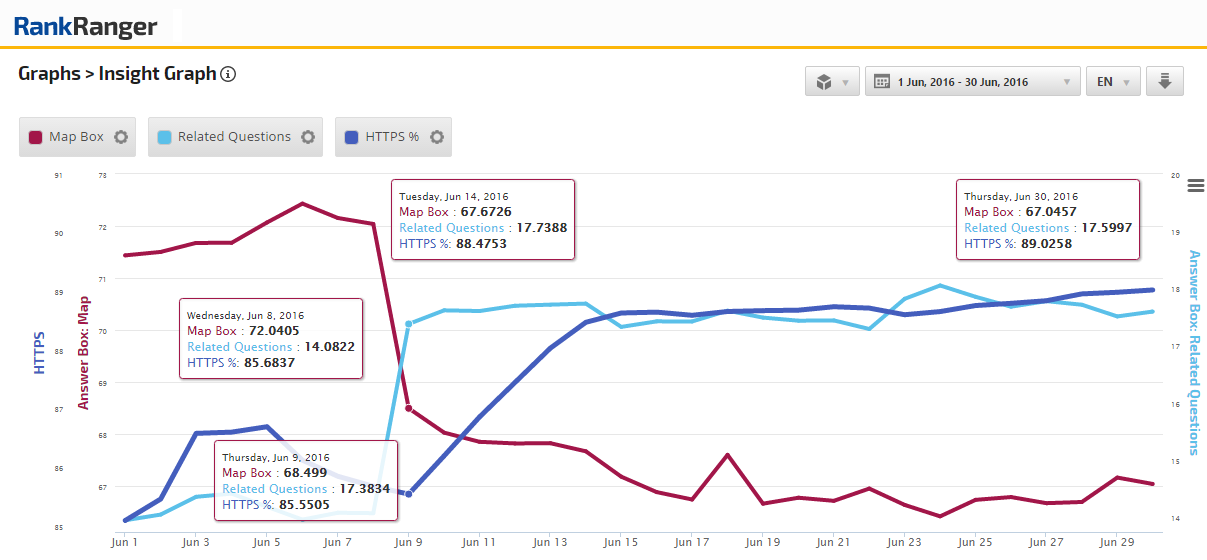
Fig 2. Map Box in the US takes an early month loss while Related Questions and HTTPS rise and take on a new data trajectory
Map Box started the shifting trend by beginning a data dive on June 8 (showing a roughly 3% loss by the 9th), from which it never recovered. By month’s end the feature went from accounting for 71.44% of all Answer Boxes to taking up 67.05% of Answer Box real estate.
Conversely, Related Questions spiked from showing within 14.08% of Answer Boxes on June 8, to occupying 17.74% of Answer Boxes on June 9, a one day increase of 3.66%. Related Questions continued on this data path throughout the month, displaying in 17.6% of Answer Boxes on June 30.
Coming off a slight downtrend, HTTPS also began an early month data climb that started on June 9. Unlike its Answer Box counterparts, the percentage of Page One results that presented HTTPS didn’t reach a new plateau in a single bound. Instead, the feature climbed at a steep rate until June 15 and ended the month with an over 3% net gain.
Mid-month SERP Data Shifts
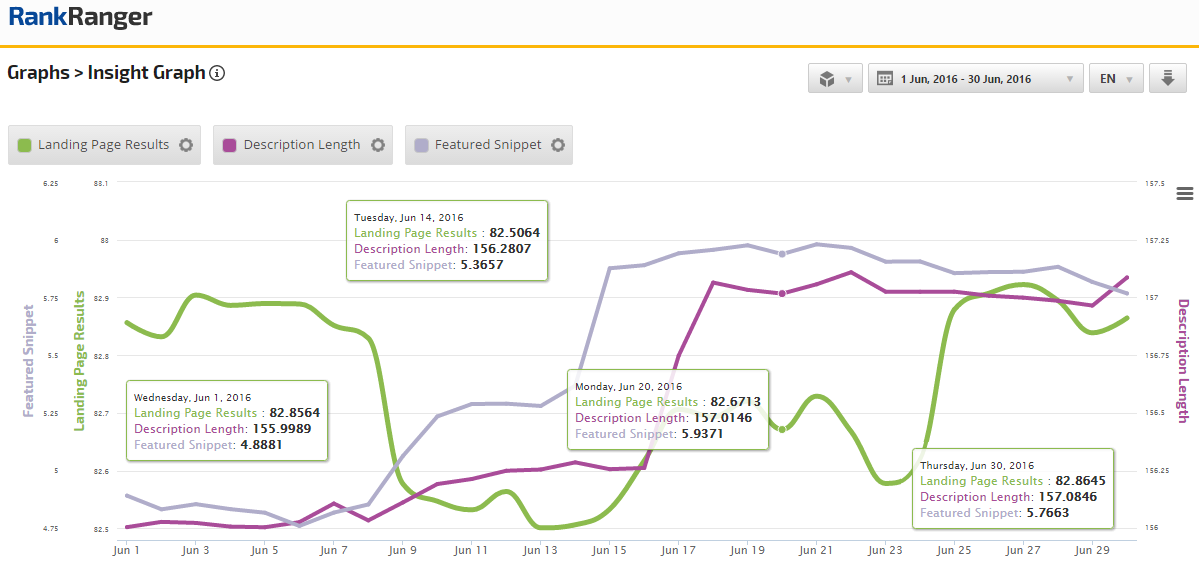
Fig 3. Featured Snippet and Description Length show a mid-month spike while Landing Page Results display a new mid-month data pattern
As promised, mid-June presented a second SERP shift bonanza. As mentioned in the June 14th edition of the SERP Snapshot, Featured Snippets broke the 5% mark in countries around the world. What we did not know then, but can certainly see now, is that the feature in the US (among other countries), took on a new data trajectory at even higher levels, via a June 14 – 15 spike.
A day later, following the Featured Snippets spike, the average Description Length of results in the US began a bump that resulted in a full percentage point increase from its June 1 start. Beginning the month with an average of 156 characters per result, the average length of result descriptions was 157.1 by June 30, an unusual increase that has thus far displayed some lasting power.
Lastly, and frankly peculiarly, Landing Pages within Page One results went topsy turvy displaying at a low the SERP Features Tool had yet to record. Interestingly, by the 25th the percentage of Landing Pages returned back to previous levels.
Global SERP Trajectory Shifts
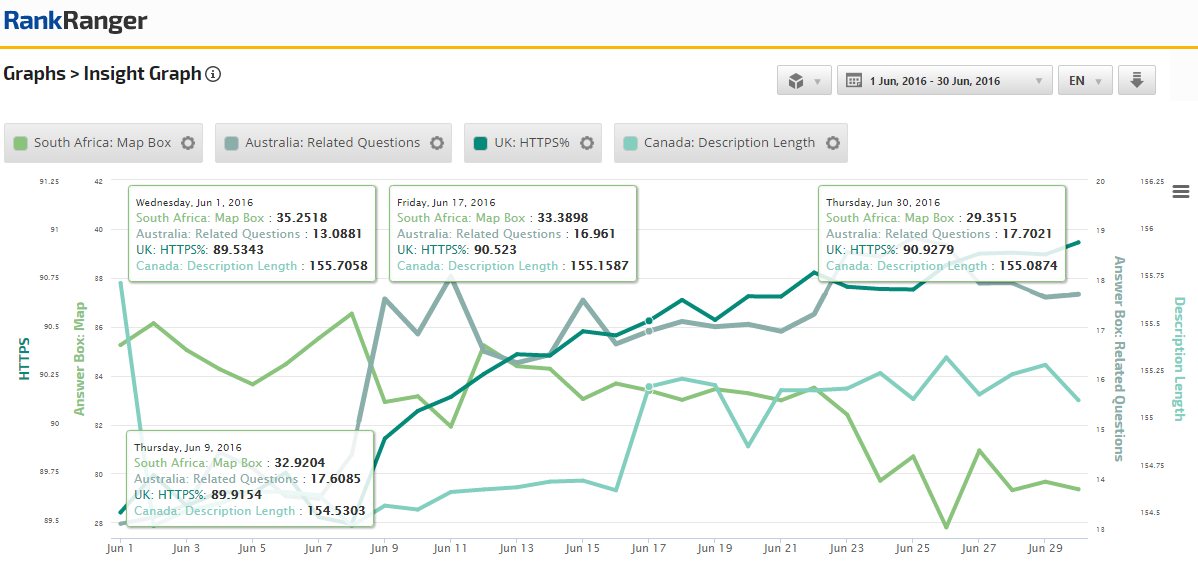
Fig 4. Global SERP feature trajectory shifts throughout the English speaking world.
Adding fuel to the shifting SERP trajectory fire, the feature vacillation indicated in Figures 2 and 3 were not isolated to only the US. Indeed, the June SERP shifts indicated in the US were prevalent throughout the English speaking world. Just by way of example, South Africa showed a similar decline in Map Box, Australia displayed an analogous shift in Related Questions, the UK also saw HTTPS take on a sharper data incline after a slight drop off, while Canada took on a mid-month Description Length spike.
Of course, as the old saying goes, timing is everything, and the timing here is perfectly aligned to the data shown in the US. Just as in the US, Related Questions in Australia started to rise on June 8, HTTPS in the UK on the 9th, while Canada’s Description Length took off on the 16th.
Six Month Google SERP Mark
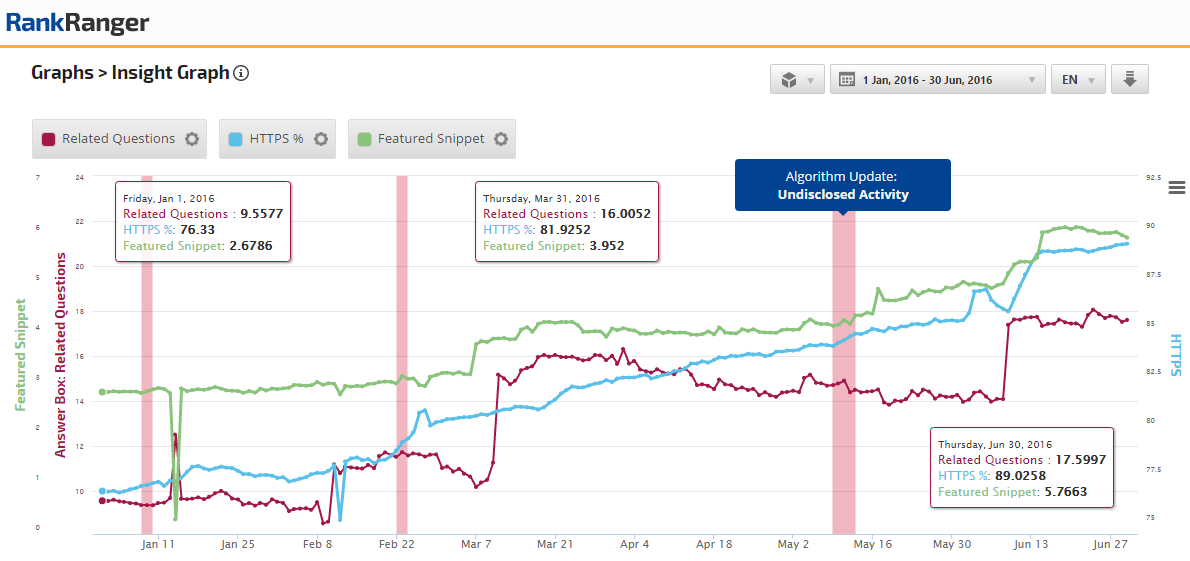
Fig 5. Related Questions, HTTPS, and Featured Snippet data for the first half of 2016 in the US
The month of June not only presents the opportunity to analyze monthly SERP data, but with its conclusion comes the chance to analyze SERP performance for the first half of 2016. What better way to do so than by looking at the data over the past six months for some of June’s trajectory shifting SERP features.
Related Questions, which as indicated in Figure 2 took an over 3% increase in June, showed an impressive 8% increase since January 2016. If you look at the data trend for the feature as presented within Figure 5, you’ll see just how significant the one day spike in June was compared to its day-to-day movement.
Seeing just how steep HTTP’s data incline (which began on June 9) actually was puts the data within Figure 2 into perspective. Other than a dip and subsequent rise back in February, the feature has not moved up that sharply in six months. Overall, since January 2016, the percentage of Page One results that present at least one HTTPS result has risen nearly 13%.
Featured Snippet, has undergone quite the shift over the last six months, presenting itself in more than double the Page One results since the year began. Again, looking at the mid-June spike and the subsequent SERP trajectory shift in comparison to other data spikes over the last six months, it becomes easy to see the relative significance of this recent uptick.
Overall, these three features have not only been continuing to rise in the US over the last six months, but have uniquely taken on multiple trajectory shifts, with the latest occurring this past June.
Monthly Mobile SERP Trajectory Shifts
The desktop SERP was not the only one to undergo significant trajectory shifts. Our soon to be released Mobile SERP Features Tracker caught a few of its own “data fish.” Actually it caught the very same SERP features that shifted on desktop!
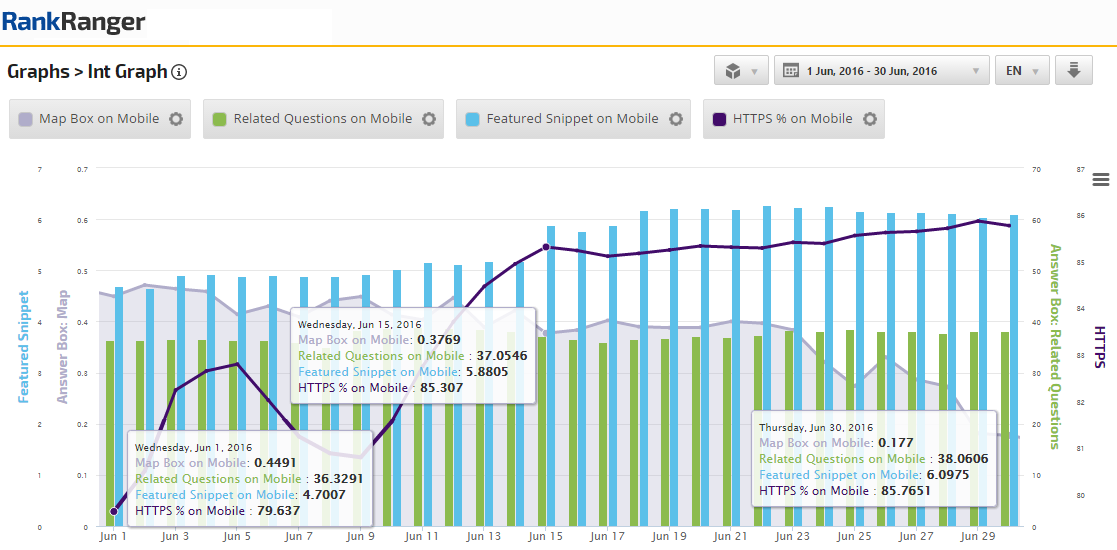
Fig 6. Map Box, Related Questions, Featured Snippet, and HTTPS on mobile show a similar data pattern to the same features on desktop (see Figures 2 & 3)
Like its desktop counterpart, Map Box on mobile showed an overall downtrend as June progressed. However, the percentage of Answer Boxes that consisted of Map Box altogether were nominal, unlike on desktop.
Related Questions and Featured Snippet also presented the same data spike patterns on mobile as they did on desktop. Related Questions on mobile jumped just under 2% between June 8 and 9, similar to its spike on desktop. Likewise, Featured Snippet on mobile spiked between June 14 and 15, increasing around 1%. By month’s end Featured Snippet on mobile broke the 6% mark, a target it has yet to reach on desktop.
Organic Results Data Shift on Mobile
Mobile data trajectories that coincide with desktop performance does not preclude the mobile SERP from having its own identity. One of the most significant trajectory shifts unique to mobile was the mid-month upswing of 9 organic results when compared to the percentage of 10 organic results displaying.
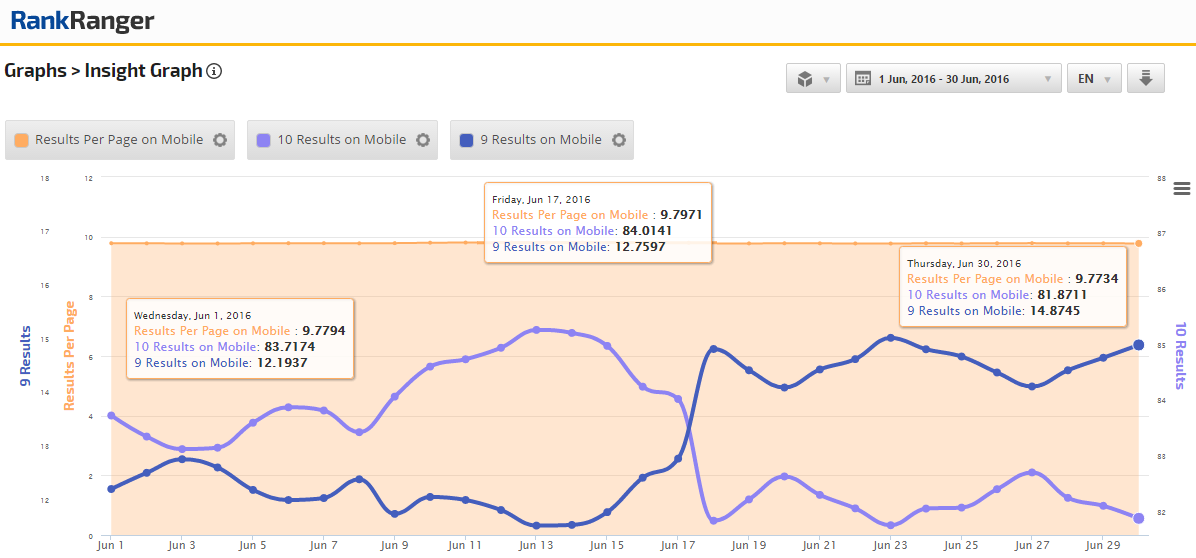
Fig 7. Nine organic results begin an upswing in mid-June as ten organic results concurrently shift downwards
As the above graph clearly indicates, and as I have reported over the past few weeks, 9 organic results took a mid-month spike and have not looked back (all while 10 organic results has taken on a new and lower data trajectory). By month’s end 9 organic results took an over 2% uptick while 10 organic results saw a roughly 2% loss. Those of you who closely follow the behavior of organic results know just how peculiar this movement is.
SERP Features Performance Unique to Mobile
Beyond the data related to organic results, mobile had a set of SERP features that had their own data direction independent of desktop. This is of course easy when considering that mobile has a plethora of SERP features that simply don’t exist on desktop, Rich Cards being an example. However, even some of those features that both SERPs share had their own unique behavior on mobile last month.
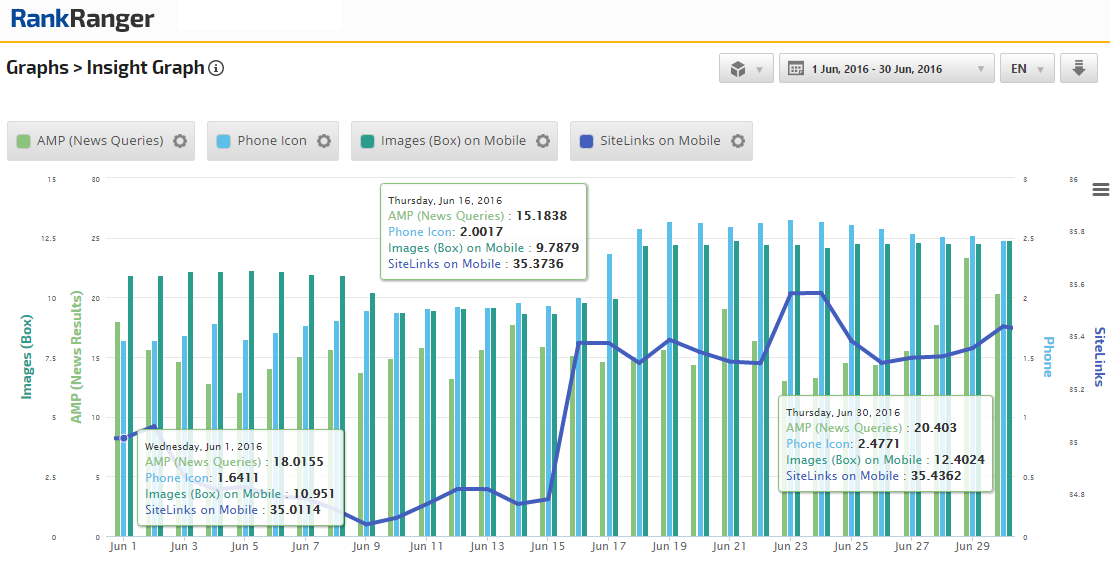
Fig 8. June SERP feature fluctuations unique only to mobile
To start things off, AMP (News Queries) had a pretty volatile month on the mobile SERP in the US, even considering that the feature does follow the news cycle to an extent (i.e. with less news on the weekends, there are subsequently less AMP pages showing on the SERP). In fact, June 29 saw AMP history with a new high of AMP showing within 23.42% all new queries in the US.
What is even more fascinating is that Phone Icon is on the move and in one direction only, up. Still not appearing in a huge amount of Page One results on mobile, the feature did break the 2% threshold by mid-June and ended the month with an almost full percentage point increase.
In regards to the features that both desktop and mobile share, Image (Box) and SiteLinks displayed uniquely significant data on mobile. Image (Box) ended the month with an almost 1.5% increase. However, between June 16 – 30, the feature underwent an over 2.5% increase. SiteLinks on the other hand did not even garner that much of a percentage increase. Although, as Figure 8 clearly indicates, the feature underwent a spike that for all intents and purposes constituted yet another SERP trajectory shift in the month of June!
Mobile SERP Fluctuation Monthly Levels
A little spike here, a small SERP trajectory shift there, why is this data on mobile so significant? Three words, mobile… SERP… fluctuations.
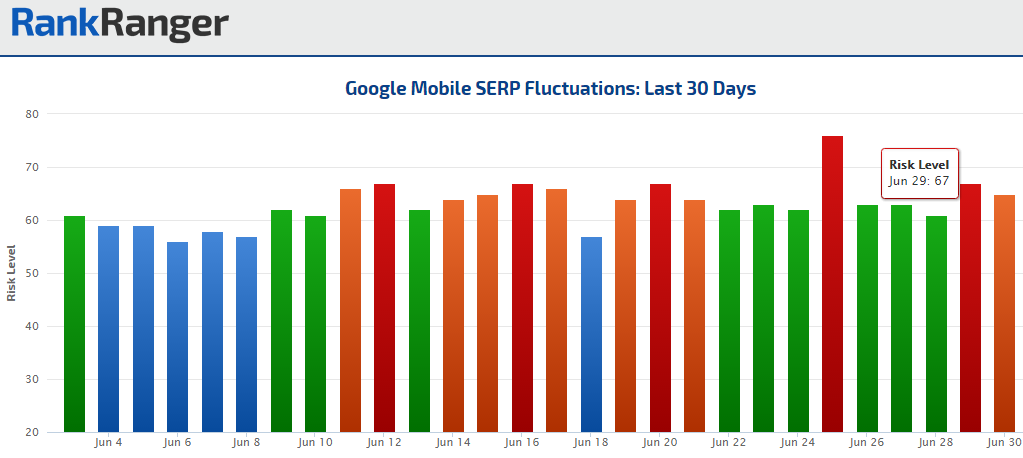
Fig 9. Risk levels on mobile show at elevated levels for nearly half the month
For 12 out of June’s short 30 days, the Rank Risk Index for mobile showed elevated fluctuation levels. If this were May, when Google rolled-out a mobile algorithm update, I would say these levels make some sense… but that was May and this is June.
Consider then not only the quantity of days with increased risk levels, but the quality as well. Half of those days showed only moderate risk levels. In other words, yes there were fluctuations, no, they were not always seismic sort of shifts.
Thus, when you see features like Phone Icon taking small steps forward, or SiteLinks taking a new data trend upon itself, in conjunction with shifts in organic results, HTTPS, Featured Snippet, AMP (News Queries), and Image (Box), the concept of the mobile SERP being in a constant state of flux emerges. A state of flux that is perhaps indicated by a series of moderate to sharp risk levels on the Rank Risk Index throughout June.
Sayonara from SERP Land
With so many SERP data changes in June is there anything July can do to top it? What new trends and changes will the new month bring to Google’s SERP on desktop and mobile? What will the next six months of SERP data look like?
Have any predictions? Forecasts? SERP prophecy? I’ll take all comers!




